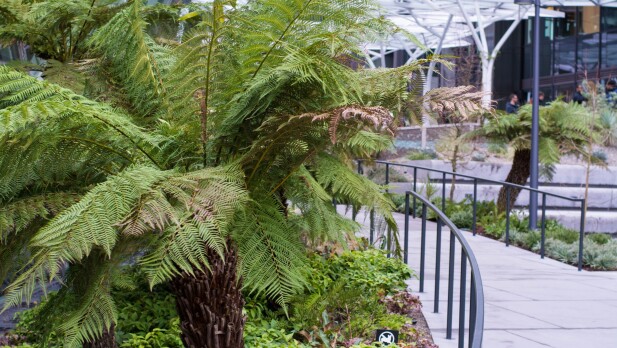By The Spheres Staff on March 30, 2018
Creating an urban arboretum outside of The Spheres was an important piece of Amazon’s development in South Lake Union and The Regrade neighborhoods. Any visitor will quickly notice that the exterior plant palette around The Spheres is just as diverse as what grows inside the structure. To diversify our outdoor plant collection, we worked closely with Site Workshop, a Seattle-based landscape architecture firm, to create a stimulating external environment throughout Amazon’s Seattle headquarters. Below are a few of our favorite plants – we hope they catch your eye next time you are walking around The Spheres and the Denny Triangle neighborhood.

A Palm in Seattle?
The Tree Fern (Dicksonia Antarctica) may look like a palm tree, but it is actually a terrestrial fern native to Australia and Tasmania. This strong tree can weather Seattle’s winter temperatures, making it a perfect external fit. The fern is located along the north side of The Spheres, next to the playfield and community dog park.

A Winter's Bark near the dog park
Another plant right next to our community dog park is Drimys winteri – a small, evergreen tree commonly known as Winter’s Bark. Native to Chile and Argentina, fragrant white flowers in loose umbels adorn this tree. Winter’s Bark is known for its aromatic bark, which can be brewed into a Vitamin C-rich tea – in fact, in the 1500’s, sailors used this tea to prevent scurvy.

Plant or Reptile?
On the west side of The Spheres is a unique plant that is endemic to New Zealand – the Fierce Lancewood, also known as Pseudopanax ferox. The Fierce Lancewood has developed amazing defensive adaptations over time. As a sapling, it sprouts saw-shaped leaves that protect it from potential predators. As it gets taller and more mature, it totally transforms and palmate leaves, which consist of small green leaflets, emerge.

